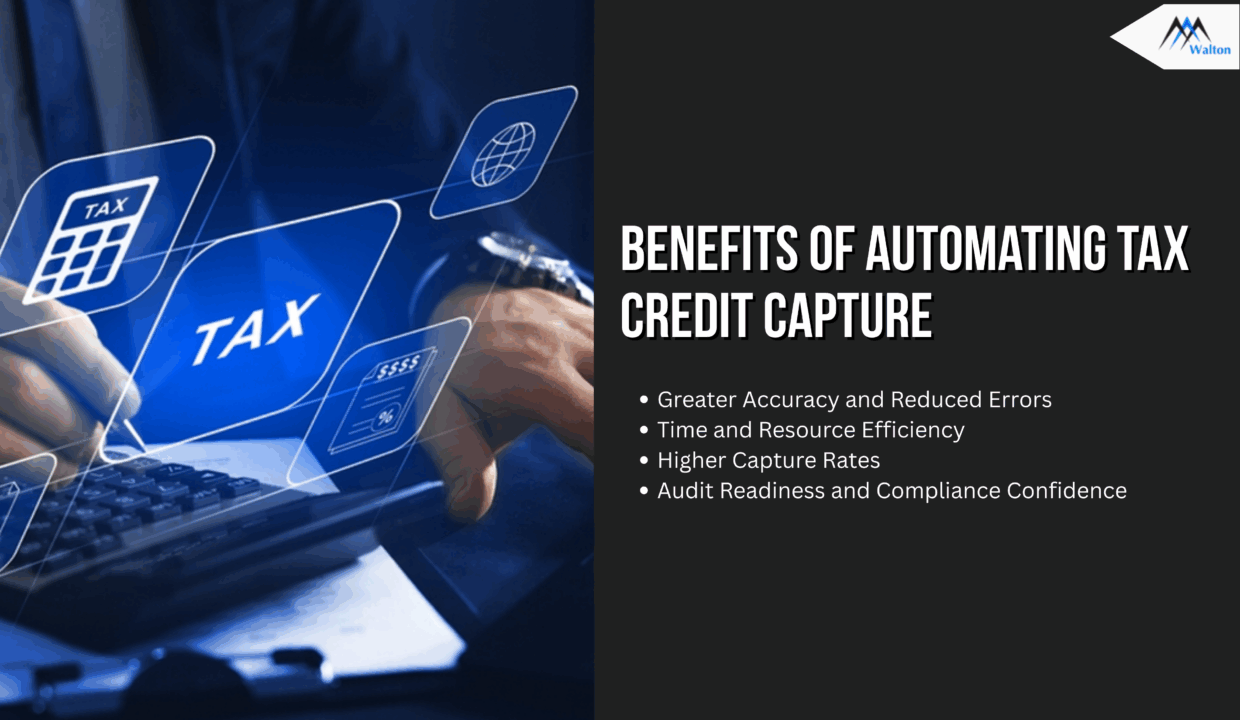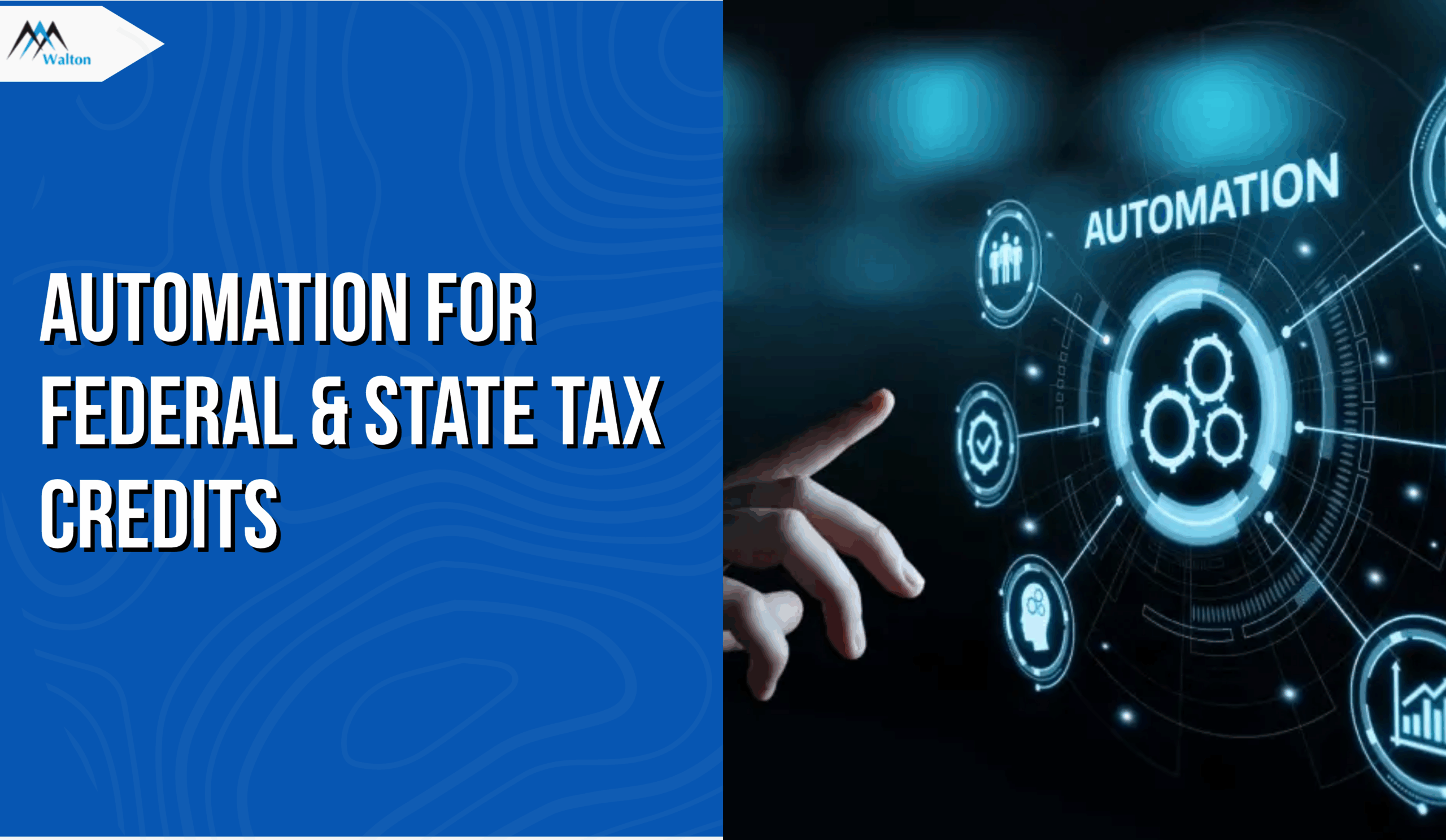Introduction
Tax incentives are one of the most powerful ways businesses can reduce their tax burden and redirect savings into growth, hiring, or innovation. Every year, billions of dollars in federal tax credits and state tax credits are left unclaimed simply because organizations don’t know what they qualify for or lack the systems to apply effectively. According to a report from the Government Accountability Office (GAO), many companies fail to capture the full value of available credits due to the complexity of the process.
Traditionally, businesses have relied on manual paperwork and fragmented workflows to track, calculate, and apply for each tax credit. But with hundreds of programs across different jurisdictions and frequent updates to eligibility rules, manual processes often fall short. This is where HR automation and intelligent tax technology are transforming outcomes. By leveraging automation, companies can efficiently identify, calculate, and claim every eligible federal tax credit and state tax credit, ensuring no opportunity is overlooked.
The Complexity of Federal and State Tax Credits
The U.S. tax code is designed not only to collect revenue but also to incentivize certain types of behavior, such as hiring, research, and clean energy investments. However, this has resulted in an increasingly complex network of federal tax credits and state tax credits, each with its own eligibility rules, forms, and deadlines. For businesses, navigating this web can feel overwhelming.
For example, the Work Opportunity Tax Credit (WOTC) is a well-known federal tax credit that rewards employers who hire individuals from certain targeted groups, including veterans and long-term unemployed workers. The U.S. Department of Labor notes that WOTC can save employers up to $9,600 per eligible hire. Yet, despite the program’s clear value, employers often miss out on millions in potential savings because they don’t screen applicants consistently or fail to submit documentation within the required timeframe.
On the innovation side, the Research & Development (R&D) Tax Credit, another critical federal tax credit, offers businesses significant opportunities to recover costs tied to technological development, product testing, and process improvements. According to the Internal Revenue Service (IRS), the credit can apply to wages, supplies, and even certain software costs. However, compliance requires detailed documentation, ongoing tracking, and a clear understanding of what qualifies under complex definitions of “innovation.”
Layered on top of these federal programs are hundreds of state tax credits, which vary widely by jurisdiction. Some states incentivize renewable energy projects, while others prioritize job creation in disadvantaged communities. For instance, California offers a California Competes Tax Credit (CCTC) to encourage business growth and job creation in the state. These programs change frequently, meaning businesses need to monitor legislation, rule updates, and deadlines across multiple states simultaneously.
Without automation, many companies rely on manual spreadsheets, HR teams, or external consultants to track these programs, leaving enormous room for human error. That’s why forward-thinking businesses are adopting HR automation tools to cross-reference employee data, payroll, and job locations against both federal tax credits and state tax credits in real time. By automating eligibility screening and documentation, businesses not only reduce administrative burden but also maximize their ability to claim every available tax credit.
The Traditional (Manual) Approach and Its Limitations
For decades, most businesses approached tax credit management manually. Teams would research federal tax credits and state tax credits, maintain spreadsheets, and track deadlines by hand. While this method worked for small-scale operations in the past, it has become highly inefficient and error-prone in today’s environment.
Heavy Paperwork and Documentation
Claiming a federal tax credit like WOTC requires multiple forms (such as IRS Form 8850 and ETA Form 9062) to be completed within 28 days of a new hire. Missing the deadline means losing the credit entirely. Manual filing often results in incomplete forms or delays in submission, leading businesses to miss out on savings.
Difficulty Tracking Multiple State Programs
Each state tax credit has unique eligibility rules and reporting requirements. A company operating in five states may need to track five completely different incentive programs. Without centralized automation, HR teams spend countless hours researching state websites, updating eligibility lists, and preparing separate applications. Optimizing Tax Credits with Integrated Payroll Solutions can streamline this process, reducing the risk of overlooked incentives. This makes it easy to overlook valuable credits.
Inconsistent Employee Screening
Manual onboarding often fails to capture all eligible employees for credits like WOTC. If HR teams forget to ask the right questions during hiring or if paperwork is misplaced, the opportunity for a tax credit is lost. Research shows that businesses frequently underutilize tax incentives because of incomplete or inconsistent screening.
High Administrative Burden
Manual tracking of federal tax credits and state tax credits places enormous stress on HR, payroll, and finance departments. Staff often must:
- Track legislative updates.
- Cross-check payroll and employee data.
- Maintain extensive records in case of IRS or state audits.
This burden can lead to burnout, mistakes, or a decision to skip applying for credits altogether, resulting in significant lost revenue.
How Automation Enables Full Credit Capture
The shift from manual processes to HR automation is a game-changer for businesses trying to maximize their savings from every available tax credit, whether it’s a federal tax credit or a state tax credit. Automation allows organizations to scale their compliance efforts, reduce human error, and identify opportunities that would otherwise slip through the cracks.
Here’s how automation reshapes the tax incentive landscape:
Real-Time Eligibility Screening
Automated platforms can cross-reference applicant and employee data against government programs, ensuring businesses never miss out on credits such as the Work Opportunity Tax Credit (WOTC). By embedding eligibility questions directly into digital onboarding workflows, companies can capture credits consistently and accurately. According to the U.S. Department of Labor, WOTC has delivered billions in employer savings since its inception, but many employers fail to file correctly when relying on manual methods.
Seamless Data Integration
Manual systems require HR and payroll teams to dig through files, spreadsheets, and emails. With HR automation, tax credit platforms integrate directly with payroll, HRIS, and applicant tracking systems. This integration eliminates duplicate data entry and ensures that employee information is automatically linked to both federal tax credits and state tax credits.
Compliance and Deadline Management
One of the biggest risks in claiming a tax credit is missing a deadline or submitting incomplete documentation. Automated solutions provide alerts, auto-generate required forms, and maintain audit-ready records. This not only protects businesses from penalties but also ensures that every federal tax credit and state tax credit opportunity is captured before it expires.
Scalability Across Jurisdictions
Companies operating in multiple states often face a patchwork of local credit programs. Without automation, tracking dozens of programs is nearly impossible. Automation scales seamlessly, managing eligibility across multiple states and automatically adjusting to legislative updates. This helps ensure businesses maximize every state tax credit without overburdening HR or finance staff.
Automation in Action: Walton’s Approach
Walton Management has built automation directly into its tax incentive solutions, combining technology with expert advisory. Their platform integrates with applicant tracking and payroll systems, enabling employers to:
- Screen every applicant for WOTC eligibility in real time.
- Capture both federal tax credits and state tax credits automatically.
- Generate compliance-ready documentation without manual effort.
In a recent Walton case study, a multi-state employer increased screening completion rates from 54% to 95% after adopting automated workflows, boosting their annual tax credit savings by more than 150%. By replacing manual data collection with HR automation, the employer captured millions in incentives that were previously lost.
The Benefits of Automating Tax Credit Capture
Automation doesn’t just simplify processes; it transforms the way businesses approach tax incentives. By integrating HR automation into tax workflows, organizations maximize every tax credit, from large-scale federal tax credits to smaller, industry-specific state tax credits.

Here are the core benefits businesses experience when they move away from manual processes:
Greater Accuracy and Reduced Errors
Manual tracking of credits like the Work Opportunity Tax Credit (WOTC) or R&D credits often leads to mistakes in forms, missed deadlines, or overlooked employees. Automated platforms validate data in real time, reducing the risk of errors and ensuring every eligible tax credit is captured.
Time and Resource Efficiency
Manual processes require HR, payroll, and finance teams to dedicate countless hours to paperwork. With HR automation, data is pulled directly from existing systems, freeing staff to focus on strategic initiatives instead of chasing forms and deadlines. This efficiency translates into faster credit claims and reduced overhead.
Higher Capture Rates
Automated eligibility screening ensures that no potential federal tax credit or state tax credit is missed. Businesses that adopt automation consistently report significantly higher capture rates compared to manual processes. For example, companies working with Walton Management Services have increased their realized credits by double-digit percentages simply by automating WOTC screening during onboarding.
Audit Readiness and Compliance Confidence
Every tax credit claim requires detailed documentation to withstand potential IRS or state audits. Automation creates digital trails, maintains electronic records, and prepares audit-ready reports. This not only reduces compliance risk but also gives finance teams confidence that they are fully protected.
Balancing Automation with Human Expertise
While HR automation plays a critical role in streamlining eligibility checks, documentation, and compliance, technology alone isn’t enough to maximize every available tax credit. Programs such as the federal tax credit for research and development (R&D) or specialized state tax credits often involve nuanced eligibility requirements that demand expert interpretation.
Automation excels at handling scale:
- Screening thousands of applicants for WOTC eligibility.
- Integrating payroll data to track qualified wages.
- Auto-generating forms and compliance documentation for both federal tax credits and state tax credits.
But when it comes to strategy, businesses still rely on tax professionals who understand how credits interact with broader financial planning. Human expertise ensures that automation outputs are optimized, whether that means structuring hiring to maximize WOTC benefits or aligning R&D initiatives with qualifying activities under IRS definitions.
Case for Businesses – Why Missing Credits Hurts
Every year, businesses leave millions of dollars in unclaimed tax credits simply because they lack the systems or expertise to identify them. Missing out on a federal tax credit or state tax credit doesn’t just mean losing an incentive; it directly impacts cash flow, reinvestment opportunities, and competitive edge.
Consider the Work Opportunity Tax Credit (WOTC). For each eligible hire, employers can claim up to $9,600. Without HR automation, many companies fail to screen employees effectively during onboarding, losing out on significant savings. Multiply that across dozens or hundreds of new hires, and the financial loss quickly escalates.
The same applies to industry-specific state tax credits. For example, manufacturers may qualify for credits tied to energy efficiency upgrades, while technology firms can leverage federal tax credits for research and development. Maximize Tax Incentives with Seamless WOTC Integration into Your HR Systems to ensure these opportunities are captured effectively. When these opportunities are overlooked, companies not only miss immediate tax relief but also weaken their long-term financial strategies.
For businesses in competitive industries, failing to capture every eligible federal tax credit and state tax credit is more than a compliance issue; it’s a financial setback that competitors who leverage HR automation are already turning into an advantage.
Conclusion
Automation is no longer a future trend; it’s already reshaping how U.S. businesses identify, secure, and optimize every available tax credit. From streamlining eligibility screening and compliance to reducing paperwork and audit risks, HR automation is now a central force in modern tax credit management, helping companies capture the full value of both federal tax credits and state tax credits.
But with opportunity comes responsibility.
To thrive in this automation-powered era, leaders must look beyond tools and focus on alignment between technology, people, and purpose. It’s not about replacing tax professionals with machines, but about enhancing their expertise through smarter systems, better data, and more actionable insights. When HR automation and advanced tax credit solutions are applied thoughtfully, they become catalysts for unlocking savings, improving compliance, and empowering businesses to reinvest in growth.
Whether you’re a growing startup or an established enterprise, the time to act is now. Contact us to learn how Walton Management Services can help.

